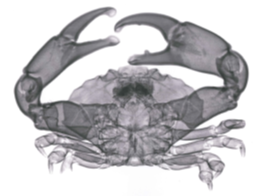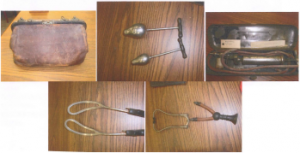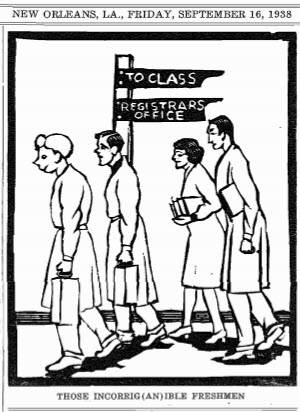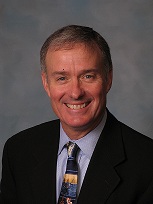The New Orleans Health Department has issued a new Health Resource Guide entitled a Guide to Behavioral Health Resources in the Greater New Orleans Area which “provides information on accessing mental health and substance abuse resources in the Greater New Orleans area.” This new guide is in addition to A Guide to No or Low Pay Community Healthcare in Orleans Parish which was released in August 2011. Both brochures are available from the Health Department webpage as PDF downloads.
Walkscore.com is a website that designates a number ranging from 0-100 to any address based on its “walkability.”
According to the website “Walk Score uses a patent-pending system to measure the walkability of an address. The Walk Score algorithm awards points based on the distance to amenities in each category. Amenities within .25 miles receive maximum points and no points are awarded for amenities further than one mile.”
The Walk Score for LSUHSC is 75. When compared against the rating chart (below)we see that LSUHSC is Very Walkable.
90ÔÇô100 Walker’s Paradise ÔÇö Daily errands do not require a car.
70ÔÇô89 Very Walkable ÔÇö Most errands can be accomplished on foot.
50ÔÇô69 Somewhat Walkable ÔÇö Some amenities within walking distance.
25ÔÇô49 Car-Dependent ÔÇö A few amenities within walking distance.
0ÔÇô24 Car-Dependent ÔÇö Almost all errands require a car.
What is the Walk Score of your home? Find out here!
The retired professor of surgery, Bert Myers, published a book about x-ray photography. A mere 18 years after the x-ray was discovered by Roentgen, the French scientist Goby took an x-ray of a leaf in 1913 and soon to follow were others that took an interest in the unique and creative art form. Most recently, Myers has been adding color to some of his x-rayed images through Photoshop.
The book mentions four image manipulations: positive, negative, solarized, and line derivation. ?áBelow is a positive black & white image of a blue crab.

For more details and an up close look at more photos, the book is available through his website or borrow the library’s copy.
If you arenÔÇÖt familiar with locating books in our library donÔÇÖt fret, take a look at our How to find a book tutorial on the libraryÔÇÖs homepage (updates coming soon!).
http://www.bmyersphoto.com/

Expectantly, when doctors did house calls, they depended on their knowledge as well as the considerably well thought out contents placed inside their bags.
Most had six compartments that allowed for a wide range of necessities to be stored; to name a few: injections, gauze, sutures, needles, gloves, and pills. More contents usually meant that the location of practice or closest hospital were farther away.
The bag was usually kept in the trunk or in the vehicles interior, however the hot summer months and freezing temperatures during winter presented challenges for some of its contents. Bottles of sterile water and ampoules were sometimes frozen solid which meant that they had to be thawed out before being administered and even then have the possibility of losing its potency.
Get an up close look! —> Currently on display in the Library Commons
Surprisingly, just about every 20 seconds a child under age 5 succumbs to the disease pneumonia. ?áIn its 2nd year of existence, the Global Coalition against Child Pneumonia is raising awareness about the disease. It is preventable and there are effective and affordable options that help protect children. The symptoms include but are not limited to: cough, shaking chills, fever, fatigue, and muscle pain. Its symptoms often mimic those of the flu but when it doubt, get checked out.
?áFor more info, visit:
http://worldpneumoniaday.org/

Have you ever considered that your hair stylist might be one of your greatest advocates in the battled against skin cancer?
Probably not, but according to an article published by amednews.com (published by the American Medical Association), ÔÇ£Nearly 60% of 203 hair professionals surveyed at 17 salons in the Houston area said they already had recommended at least once that a customer see a health professional for an abnormal mole.ÔÇØ
The article goes on to suggest the benefits of training Hair professionals on how to detect the early signs and appearances of scalp, neck and face cancer. Good to know there is one more benefit to taking a little time
for pampering!
Read the full article here.
Consumer Health | Permalink | Comments Off on Hair Professionals Might Save Lives | Posted Friday, November 4, 2011 by Claire Mayeux
A new study in the December 1st issue of Clinical Infectious Diseases exams the spread of the Norovirus among NBA players in the 2010-2011 season.
Let’s blame the Saints loss last Sunday to the Rams on a stomach bug and hope they’re better this week for their game against the Buccaneers.
Link to the pdf of the article is available to LSUHSC faculty, staff & students. It can be accessed off-campus with a valid LSUHSC library barcode & PIN. You can find more information at our remote access webpage.
The Food and Drug Administration issued an update last week on the health hazards of eating too much black licorice.
From the update: If youÔÇÖre 40 or older, eating 2 ounces of black licorice a day for at least two weeks could land you in the hospital with an irregular heart rhythm or arrhythmia.
FDA experts say black licorice contains the compound glycyrrhizin, which is the sweetening compound derived from licorice root. Glycyrrhizin can cause potassium levels in the body to fall. When that happens, some people experience abnormal heart rhythms, as well as high blood pressure, edema (swelling), lethargy, and congestive heart failure.
I wonder if this applies to black jelly beans too?
The former St. Charles General Hospital is the new location for the LSU Healthcare Network Clinics. It is located at 3700 St. Charles Ave with free parking at 3715 Prytania St. The offices officially opened on Monday, October 10th. This is also the location of the New Orleans Muscian’s Clinic. WWL-TV featured the opening on it’s nightly broadcast.
Congratulations to School of Medicine faculty, Judd Shellito, who has been awarded approximately $9 million in grant funding to develop a vaccine against Pneumocystis.
The Doctor of Physical Therapy students, Class of 2013 will host the 5th Annual LSUHSC Health and Wellness Event on October 21, 2011. They want to find out what you, the LSUHSC community, would like to get out of the event this year. They will use the responses we obtain from the survey to formulate our event. They would like the opinions of everyone in order to maximize the experience for those attending.
Please click on the survey link below and complete a short survey. Your feedback is important and will contribute to the success of the event.
https://www.surveymonkey.com/s/77BZXNT
Thank you in advance for your participation.
If you have ever visited the library commons, more likely than not you have noticed the collection of antique medical equipment on display. The display cases boast a wide and interesting array of Old & Rare inventory . . . so interesting in fact many wonder what these items were used for. And when.
In order to solve these mysteries the Isch?® Library plans to give brief history lessons about items in the display case via our blog.
First up is Davis & KidderÔÇÖs Patent Magneto Electric Machine for Nervous Disorders.
This particular machine is dated August 1, 1854 and like each Magneto Electric Machine created, the label inside the box lid provides detailed instructions for proper treatment.
ÔÇ£Directions: Connect two Metallic Cords or wires with the socket in the ends of the box, and apply the handles connected with the other ends of the metallic cords or wires to any part of the person through which it is desirable to pass the current of electricity.ÔÇØ For the full instructions (trust me, they are interesting and a bit scary) click here.
What purpose did this machine serve? The best description is found at Dr. Olgierd Lindan’s Collection of Unusual Medical Devices & Antique Electronics explains in simplest form that and electric current passed through the patientÔÇÖs body ÔÇ£generated by a pair of solenoids that spin against the poles of a large horseshoe magnet.ÔÇØ The electricity was believed to stimulate a healing reaction within the human nervous system.
Did it work? According to the above mentioned website, the treatment of this device is questionable. ÔÇ£The therapeutic value of the treatment, if any, was likely due to the placebo effect. With the electric shocks coursing through his body as he gripped the hand electrodes, the patient definitely felt that ‘something was being done’ about his complaint. Electricity was a new and novel force in the 1800’s and most patients had no prior exposure to it, adding to its curative mystique.ÔÇØ
Fun facts- each Patent Magneto Electric Machine was signed by the production company to ensure genuine authenticity of this machine. Testimonials were also printed on the inside lid delighting in the marvel of this machine.
Yesterday i09, a blog that focuses on the fascinating world of futurism, shed light on a medical marvel- Poloxmer 407.
According to the blog post (information pulled from the full-text article in Nature Medicine) doctors and engineers at Stanford have developed the use of Poloxmer 407 as a way to join blood vessels after surgery- all without the need for sutures.
It seems Poloxmer 407 starts off in liquid form but once heated to a few degrees above body temperature the liquid becomes a cohesive solid.
Pretty awesome right?
To read more visit the full article in Nature Medicine.
Link to the pdf of the article is available to LSUHSC faculty, staff & students. It can be accessed off-campus with a valid LSUHSC library barcode & PIN. You can find more information at our remote access webpage.
Is summer vacation already over? Welcome back to our second year medical students, for whom start classes tomorrow.

Class is the other way!
Image from a 1938 issue of
The Tiger, the student newspaper of the LSU School of Medicine. The entire run of the paper is available for free
online from the Louisiana Digital Library.

 myLSUHSC
myLSUHSC



